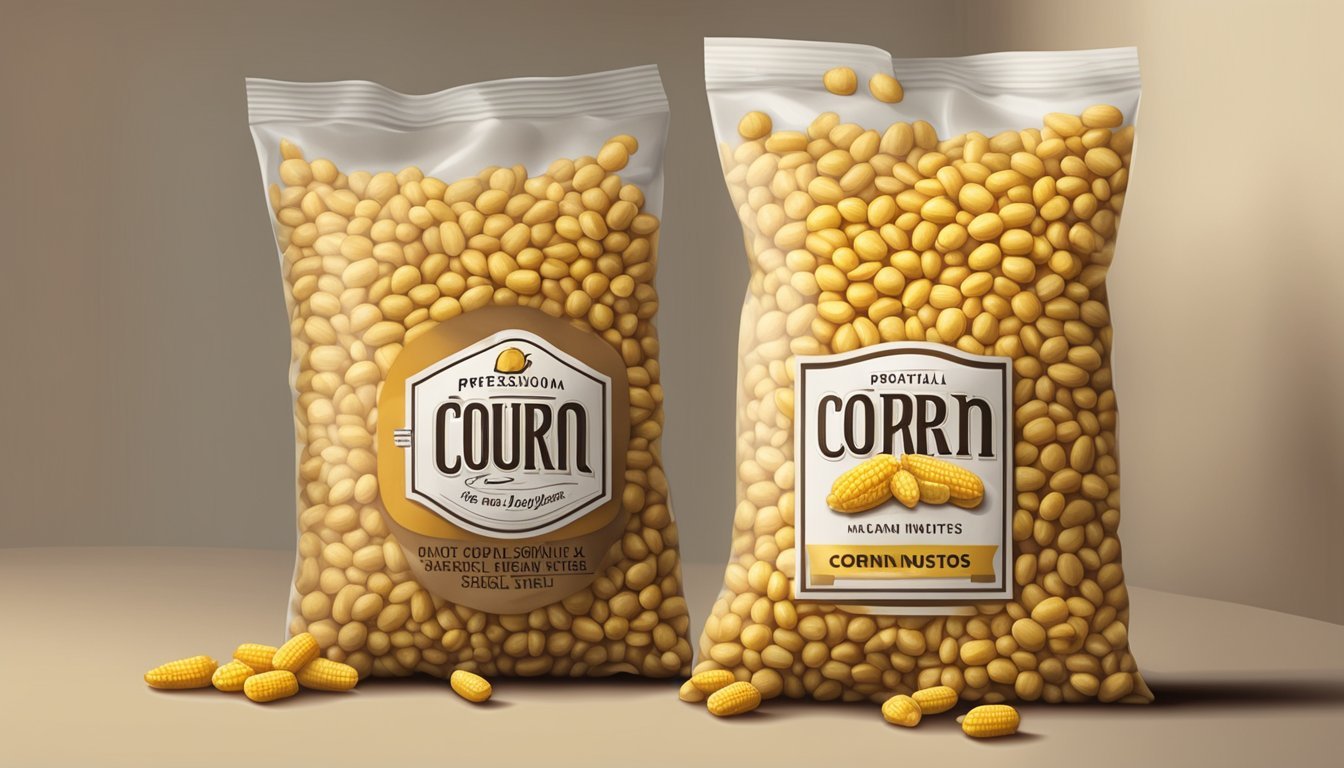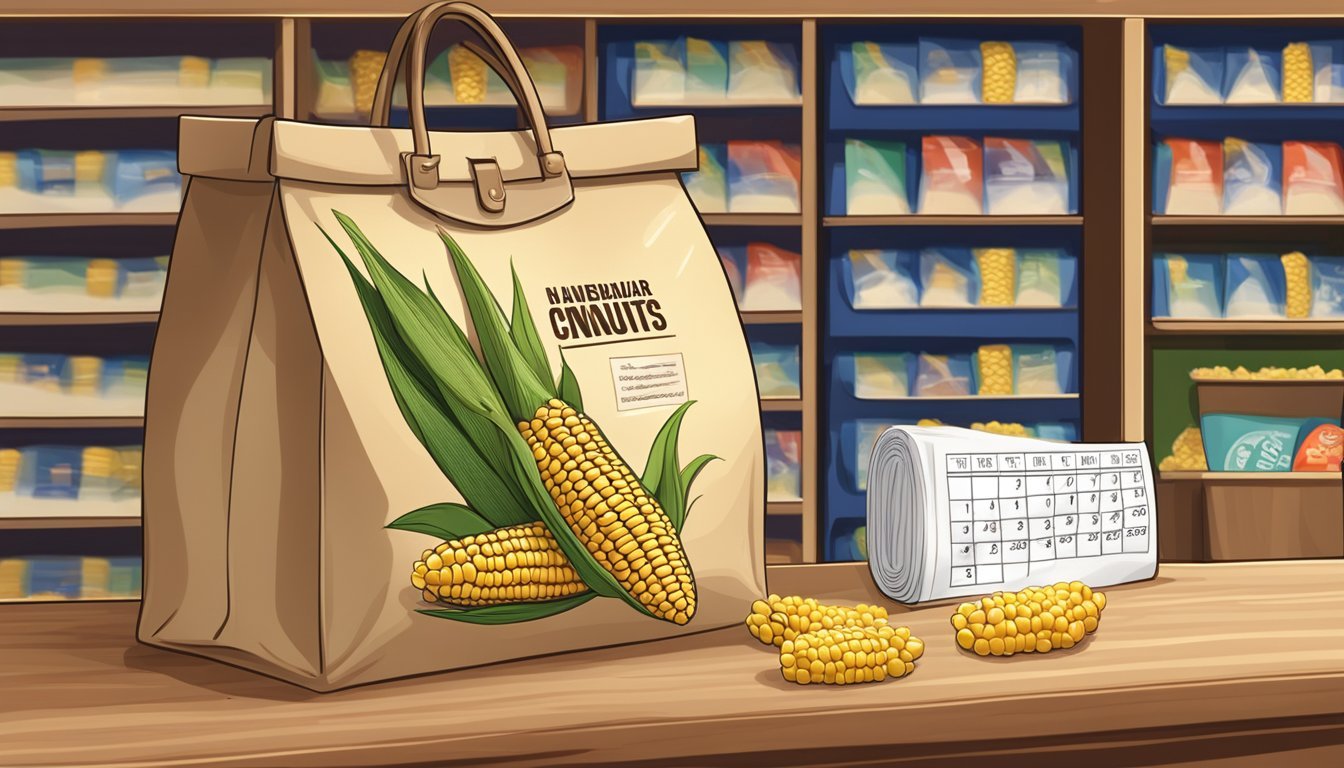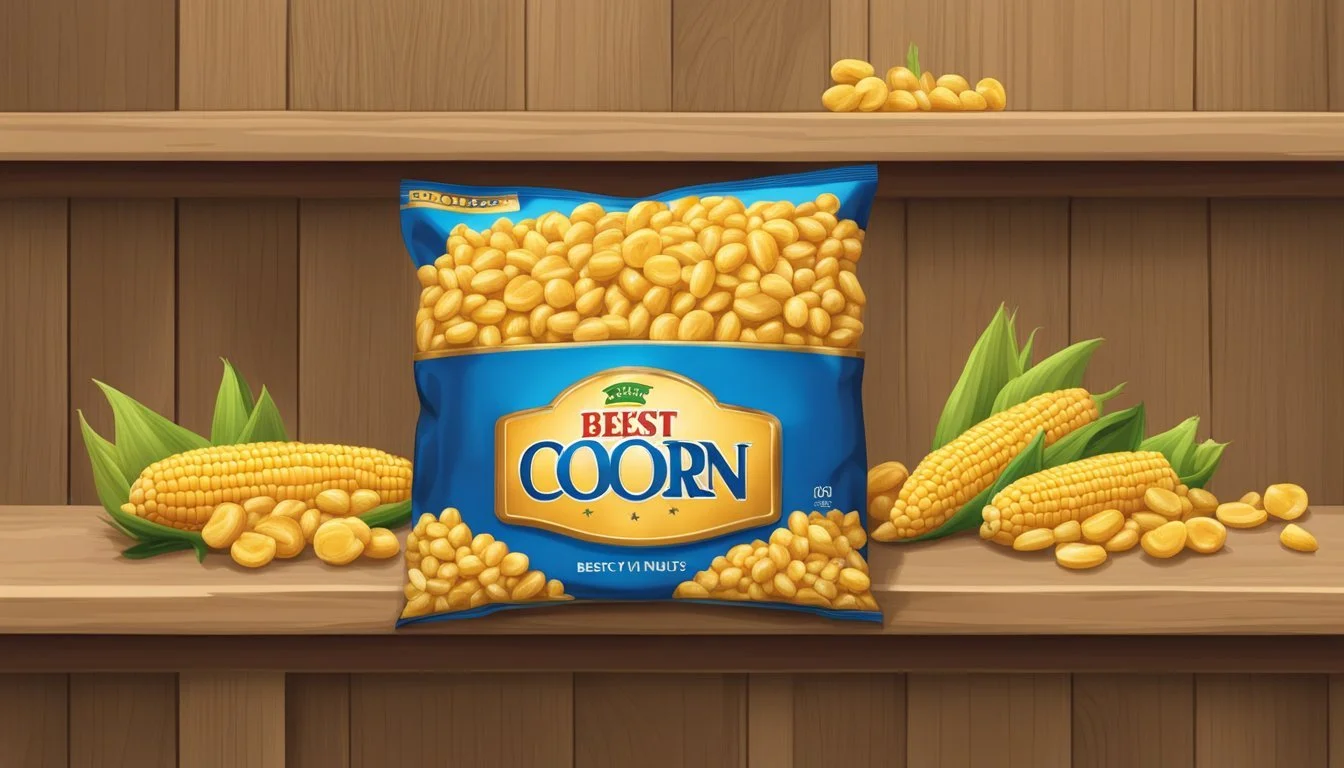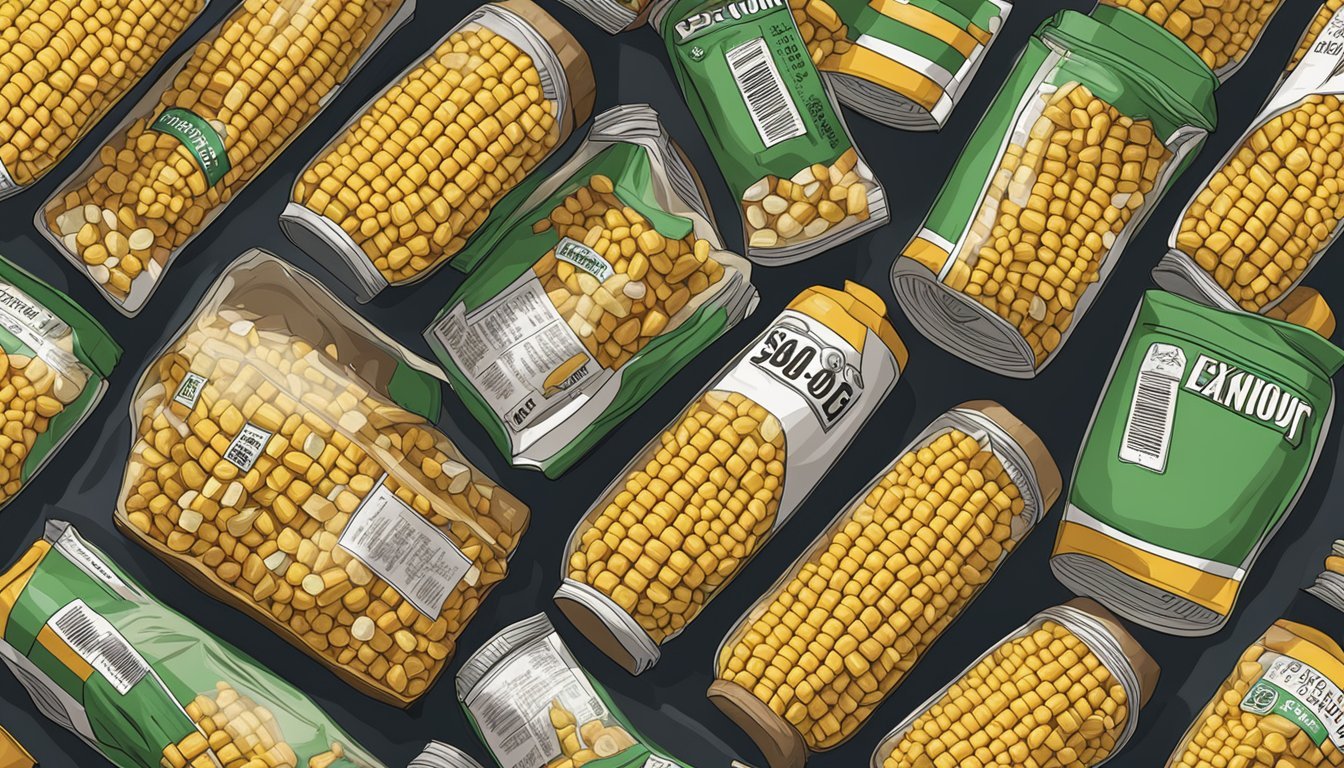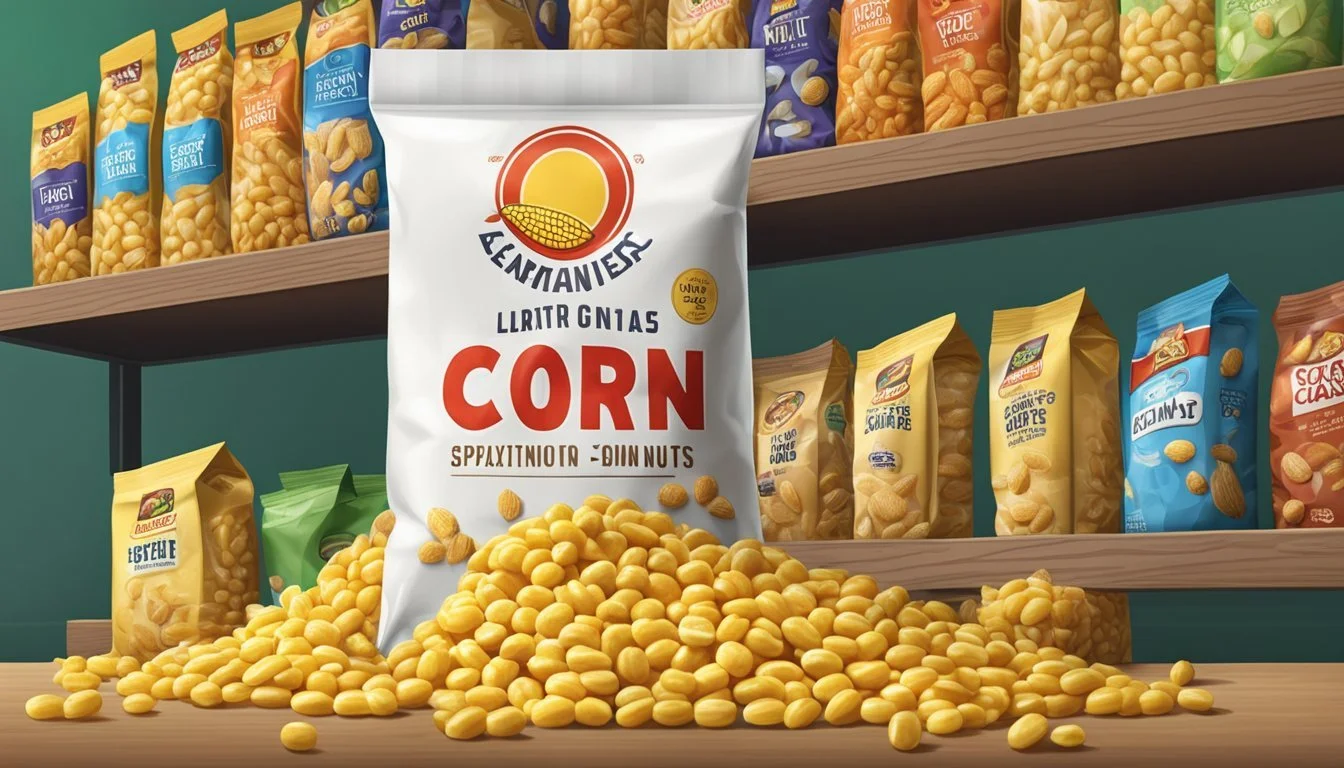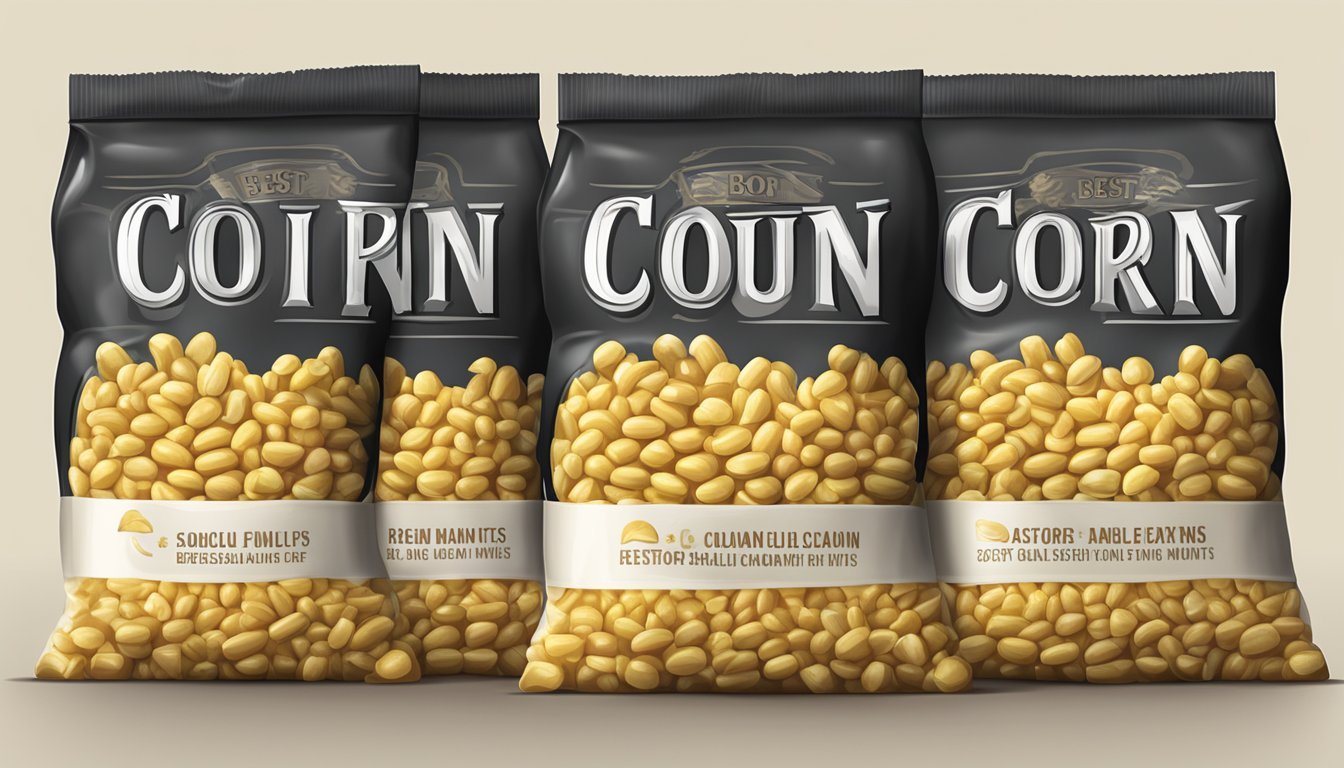How Long Do Corn Nuts Last?
Uncovering Their Shelf Life and Storage Tips
Corn (how long does corn last?) nuts (What wine goes well with nuts?), a popular snack made from large corn kernels that have been soaked, deep-fried, or roasted, boast a satisfying crunch and a shelf life that varies based on packaging and storage conditions. When sealed in their original packaging, corn nuts will usually maintain their quality for about 2 years owing to their low moisture content, which inhibits bacterial growth. However, the date printed on the package isn't an expiration date but a best by date, suggesting when the product will be at its peak quality.
Once a package of corn nuts is opened, exposure to air, moisture, and other environmental factors can potentially shorten their shelf life. Proper storage is key to maintaining their crunchiness and flavor. Storing them in a cool, dry place can help extend their freshness, and they should be consumed within a few weeks once opened. If there's any doubt about the quality of the nuts, one should check for changes in texture, aroma, and flavor to decide if they are still fit for consumption.
Corn Nut Basics
Corn nuts are a popular snack known for their crunchy texture and savory flavor. This section delves into what exactly corn nuts are and what nutritional benefits they provide.
What Are Corn Nuts?
Corn nuts are not nuts, but rather a snack food made from corn kernels that have been soaked, dried, and then deep-fried or baked. They are known for their hard and crunchy texture. The corn used for making corn nuts is typically a special variety of field corn that has a higher protein content compared to sweet corn, providing a more robust flavor and crunch.
Nutritional Profile
Corn nuts offer a decent amount of nutrients. Below is a typical nutritional profile for a standard 1-ounce (28 grams) serving of corn nuts:
Calories: 130
Protein: 2 grams
Fat: 5 grams
Saturated Fat: 1 gram
Trans Fat: 0 grams
Carbohydrates: 20 grams
Dietary Fiber: 2 grams
Sugars: 0 grams
Sodium: 200 milligrams
They provide dietary fiber and a small amount of protein, but corn nuts are also relatively high in calories and sodium. Because they are a processed snack, they should be consumed in moderation as part of a balanced diet.
Shelf Life and Freshness
Corn nuts, a popular snack made of roasted or deep-fried corn kernels, have distinct storage timelines that affect both their shelf life and freshness. Understanding these timeframes ensures optimal taste and safety when consuming.
Expected Shelf Life
The shelf life of corn nuts is influenced by storage conditions. When stored at room temperature, corn nuts remain fresh for up to one month. For extended storage, one should place them in an airtight container and keep them in the refrigerator, prolonging their freshness up to six months, or in the freezer for up to a year. Over time, the oils present in corn nuts can become rancid, affecting taste and freshness.
Freshness Indicators
Freshness can be assessed through several indicators. A fresh corn nut should exhibit a crisp texture and a pleasant, nutty flavor. When the fatty acids in the corn nuts degrade, it leads to rancidity, which is detectable by a significant change in taste and smell. A rancid smell or off-flavor is a clear sign that corn nuts should not be consumed.
Storage Solutions
The longevity of corn nuts significantly depends on the adherence to ideal storage conditions, which help in retaining their quality over time.
Ideal Storage Conditions
Airtight Container: Corn nuts should be placed in an airtight container to minimize exposure to moisture and air, which can compromise their crispness and flavor.
Pantry: A cool, dry pantry away from direct sunlight provides a suitable environment for short-term storage, typically up to one month.
Fridge: Refrigerating corn nuts in airtight containers extends their freshness for up to six months.
Freezer: Freezing is ideal for long-term storage, keeping corn nuts edible for up to a year.
Storage Location Temperature Range Duration Pantry Room temperature Up to 1 month Fridge 35-40°F (1.7-4.4°C) Up to 6 months Freezer 0°F (-18°C) or below Up to 1 year
Effect of Storage on Nut Quality
Proper storage directly affects the quality of corn nuts, from flavor to texture. Sub-optimal conditions can lead to stale, less crunchy, and potentially spoiled nuts due to moisture, pests, or staleness.
Moisture: It can cause corn nuts to become soft and lose their characteristic crunch.
Air Temperature: High temperatures can lead to spoilage, while consistent low temperatures help in preserving their freshness.
Proper Food Storage: Adhering to the correct storage guidelines ensures that corn nuts retain their intended quality.
Handling and Consumption
When dealing with corn nuts, understanding the signs of spoilage and practicing safe consumption methods are crucial for maintaining food safety. It's essential to recognize rancidity and prevent foodborne illnesses by consuming corn nuts while they are still fresh and stored appropriately.
Signs of Spoilage
Smell: Corn nuts should not emit an off-smell; a change in odor often indicates rancidity due to the oxidation process.
Appearance: Visible mold or any discoloration suggests spoilage.
Taste: If the taste is off or has a distinctive sharpness like in rancid oil, the nuts should not be consumed.
Safe Consumption Practices
Storage: Stick to proper storage in airtight containers to reduce exposure to elements that cause spoilage.
‘Best By’ Date: Use the label as a general guide; however, assess the nuts using sensory cues.
Food Safety: If there is any doubt regarding the quality of the corn nuts, err on the side of caution and avoid consumption to prevent potential food poisoning symptoms such as nausea, vomiting, and diarrhea.
Special Considerations
In this section, the focus is on specific factors that influence the shelf life of corn nuts and other nut varieties, considering storage methods, potential allergen concerns, bulk purchasing, and strategies to maintain freshness.
Freezing and Refrigeration
Freezing can significantly extend the life of corn nuts and other roasted nuts. While shelled nuts can be refrigerated for up to a year, freezing can preserve their quality for up to two years. It is essential to store them in airtight containers to prevent moisture and odor absorption. Roasted nuts like almonds, pistachios, and walnuts benefit the most from refrigeration or freezing, as their fatty content, rich in unsaturated fat and antioxidants, is prone to rancidity.
Shelled Nuts:
Refrigeration: Up to 1 year
Freezing: Up to 2 years
Unshelled Nuts:
Refrigeration: Not typically recommended
Freezing: Up to 2 years, but quality may vary
Nut Allergies and Alternatives
Those with allergies to specific nuts must read labels carefully, especially when purchasing from bulk bins, due to the risk of cross-contamination. Alternatives like sunflower or pumpkin seeds (how long do pumpkin seeds last?) can be used for individuals allergic to nuts like peanuts, almonds, or hazelnuts. They can also be stored using similar methods as nuts to ensure longevity.
Bulk Buying and Storage
Purchasing nuts in bulk can be cost-effective. However, proper storage is paramount to prevent spoilage. Bulk bins should be assessed for freshness, and nuts should be transferred to airtight containers upon purchase. Roasted and unshelled nuts often last longer than their raw counterparts due to lower moisture content.
Storage Tips for Bulk Nuts:
Packaging: Airtight containers
Location: Cool, dry place away from sunlight
Extending Shelf Life
To extend the shelf life of corn nuts and other varieties, such as walnuts, macadamias, and pine nuts, one should:
Keep nuts in their shell if possible, as unshelled nuts last longer.
Store in a dry, cool place away from sunlight.
Vacuum-seal nuts to reduce exposure to air.
Consider the use of oxygen absorbers for long-term storage.
By adhering to these specific storage considerations, the natural shelf life of nuts can be extended to maintain their taste and nutritional value.
Related Topics
Corn nuts, as a popular snack choice, have unique attributes that warrant comparison with other snacks (What wine goes well with snacks?) and a review of their health implications.
Nutritional Comparisons with Other Snacks
Corn nuts offer a distinct snack option with nutritional aspects worth comparing to other snack foods. Seeds and nuts, such as pistachios, typically provide beneficial fats, proteins, and fiber. Corn nuts, while not true nuts, still contribute to a person's fiber intake and provide a satisfying crunch that can parallel other shelled snacks. However, one should note that corn nuts are often higher in carbohydrates and may be more processed compared to unshelled nuts and seeds.
In the context of snacks, it's important to consider the issue of snacks like nuts going bad. All snacks with high oil content, including corn nuts, have the potential for the oils to become rancid over time. This degradation not only affects flavor but may also have health implications if consumed.
Health Benefits of Corn Nuts
The health benefits of corn nuts, like other snacks rich in proteins and fibers, can be favorable when consumed in moderation. The fiber content in corn nuts can contribute to digestive health, and the protein found in these snacks can be a key part of a balanced diet.
Moreover, a diet rich in fiber from various sources, including snacks like corn nuts, may assist in reducing the risk of heart disease. It does this by potentially aiding in lowering cholesterol levels and maintaining heart health. Nonetheless, it is crucial for consumers to be aware of their portion sizes to avoid excessive intake of calories and fats that may counteract these benefits. Additionally, snacks should not be relied upon as the sole source of nutrients like fiber and proteins, which are better sourced from a diverse diet including fruits, vegetables, and whole grains.
Creative Uses
When exploring the culinary versatility of corn nuts, one can marvel at the way these crunchy treats can be transformed into unique dishes. They offer a delightful crunch and a flavor that stands out, even when combined with other ingredients.
Corn Nut Recipes
Corn nuts can act as a star ingredient in a variety of recipes. They bring a nutty crunch to dishes, elevating the texture profile. For instance, one can chop corn nuts and add them to a chicken coating mix to give the chicken a distinct, crunchy exterior. Here is a simple recipe idea:
Corn Nut Crusted Chicken:
Crush corn nuts into a coarse powder.
Press chicken breasts into the corn nut mixture after dipping them in egg.
Fry until golden and the chicken is fully cooked.
Corn nuts also mix well into homemade trail mixes, complementing the softer textures of dried fruit (how long does dried fruit last?) and shelled varieties of nuts. A homemade trail mix might include almonds, cashews, dried cranberries (how long do dried cranberries last?), and a generous helping of corn nuts for an energizing snack.
Infused Varieties
Taking inspiration from flavored popcorn, corn nuts can be infused with a variety of flavors to suit any palate. Here are a couple of suggestions:
Onion Flavor:
Toss corn nuts with onion powder (how long does onion powder last?) and a bit of salt for a savory snack.
Nut Butter Coating:
Drizzle warm nut butter over corn nuts, stir to coat evenly, and allow to set for a sweet and crunchy treat.
These infused varieties can either be enjoyed on their own or used as a topping for salads and soups, providing an unexpected texture and burst of flavor.
Buying Guide
Purchasing corn nuts requires attention to quality indicators and understanding label dates to ensure freshness and food safety. The guide below outlines how to select the best product and interpret packaging information.
Selecting Quality Corn Nuts
When looking for quality corn nuts, one should examine the appearance and packaging. Quality corn nuts should be uniform in size and have a consistent golden-brown color, free from any visible dark spots which may indicate over-roasting. They should possess a hard, crunchy texture with no softness.
Packaging should be intact with no tears or holes that could have compromised the product's freshness. Ideally, corn nuts should be sold in airtight packages to prevent exposure to moisture and air, as these factors can lead to staleness or rancidity.
Label Reading and Dates
It is important to read labels carefully for food safety and quality assurance. The ‘Best By’ date gives a guideline for when the product is expected to maintain peak quality. It's not an expiration date, but it can serve as a helpful indicator for freshness.
Expiration Dates are less common on corn nuts but can appear on certain food products. If present, it indicates the last recommended day of use for the best quality, not safety. After this date, corn nuts might lose flavor, texture, or quality but are not necessarily unsafe to eat.
Here's a simple table to help understand label dates:
Date Type Meaning Action Best By Product is expected to have best flavor and texture. Good to purchase if within the date. Expiration Last date product should maintain its best quality. Assess the quality if past this date before consuming.
In conclusion, when buying corn nuts, one should ensure they are fresh by checking for quality indicators and understanding the dates on the label for maximum enjoyment and safety.
Environmental Impact and Waste
When discussing the longevity of corn nuts, it is imperative to consider their environmental impact and the consequences of waste. This takes into account everything from production to disposal, emphasizing the significance of reducing waste and selecting sustainable packaging options.
Reducing Nut Waste
To mitigate waste, consumers are encouraged to purchase corn nuts in quantities that will be consumed before they reach rancidity, a state where the oils and fats within the nuts oxidize, leading to a decline in quality. Buying from bulk bins allows one to obtain the exact needed amount and frequently ensures freshness. Moreover, proper storage is vital; corn nuts can last up to a month at room temperature, six months in a refrigerator, and a year when frozen. Transferring corn nuts to an airtight container post-purchase is a simple yet effective step to preserve their quality and extend shelf-life, thereby reducing the likelihood of discarding them due to rancidity.
Packaging and Sustainability
The packaging of corn nuts also plays a pivotal role in their environmental impact. Sustainable packaging solutions, which are either biodegradable or recyclable, are preferred to minimize their ecological footprint. Companies should aim to use materials that have a reduced effect on the environment, considering the production and disposal stages of the product lifecycle. In addition, clear labeling of expiration dates and storage instructions can guide consumers toward maintaining nut quality for longer periods and preventing unnecessary wastage. The packaging should contain as little excess material as possible, reducing the waste generated once the corn nuts are consumed.
Miscellaneous Information
In this section, we will explore the less commonly known aspects of corn nuts, including their origins and patterns of consumption across the globe.
Historical Context
Corn nuts, also known as "crispy corn kernels," have an origin that dates back to indigenous communities in Peru. These communities discovered that by soaking and then frying maize kernels, they could create a crunchy snack. This process has transformed little over the centuries but gained international appeal in the 20th century when it was commercialized.
Global Consumption Patterns
Globally, the consumption of corn nuts varies, with a significant presence in South American countries where the snack originated. The United States also sees a high consumption rate, where corn nuts are commonly available at convenience stores and vending machines. The snack's shelf-stable nature contributes to its popularity in various regions, allowing corn nuts to be an on-the-go snack in many countries.

